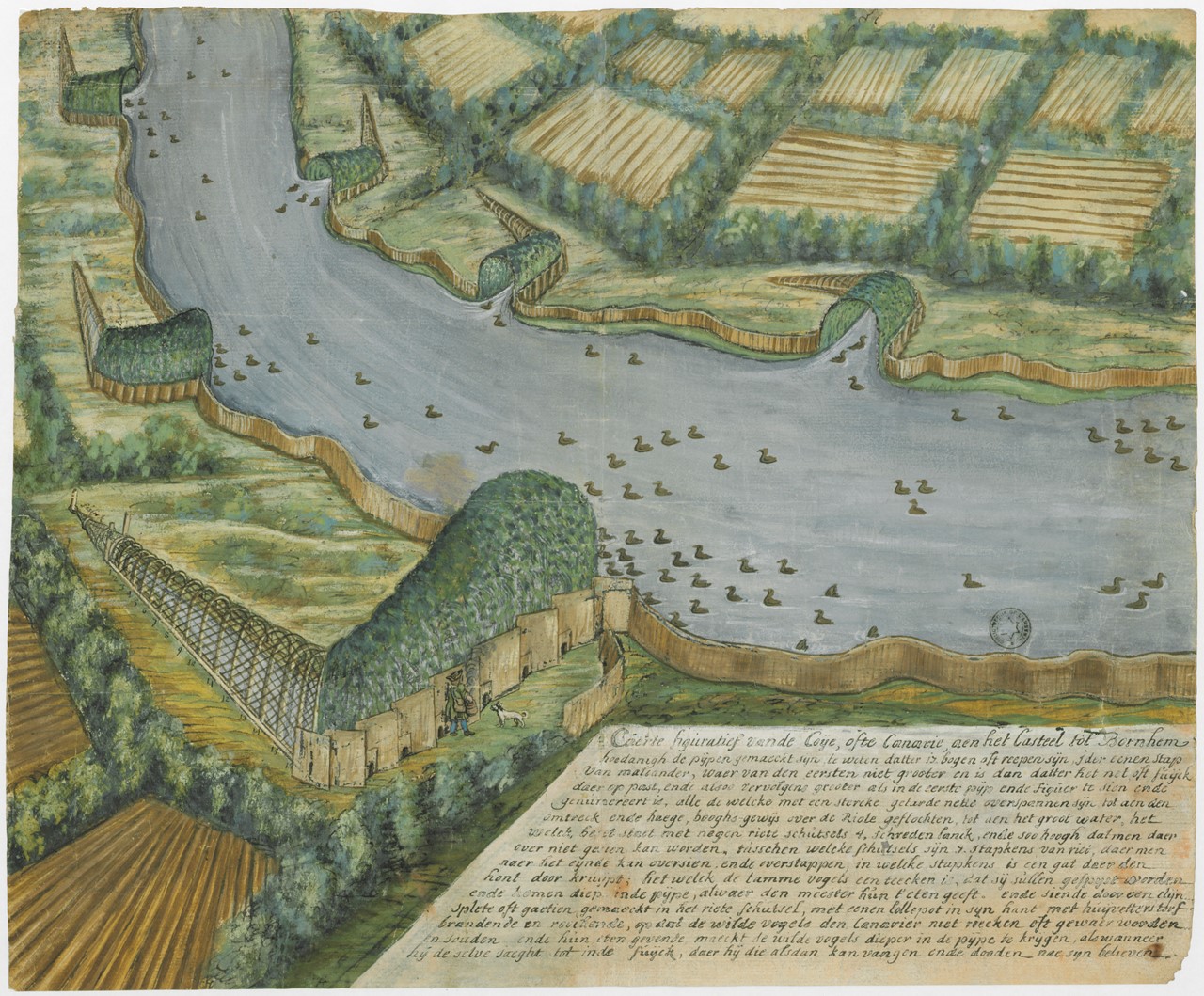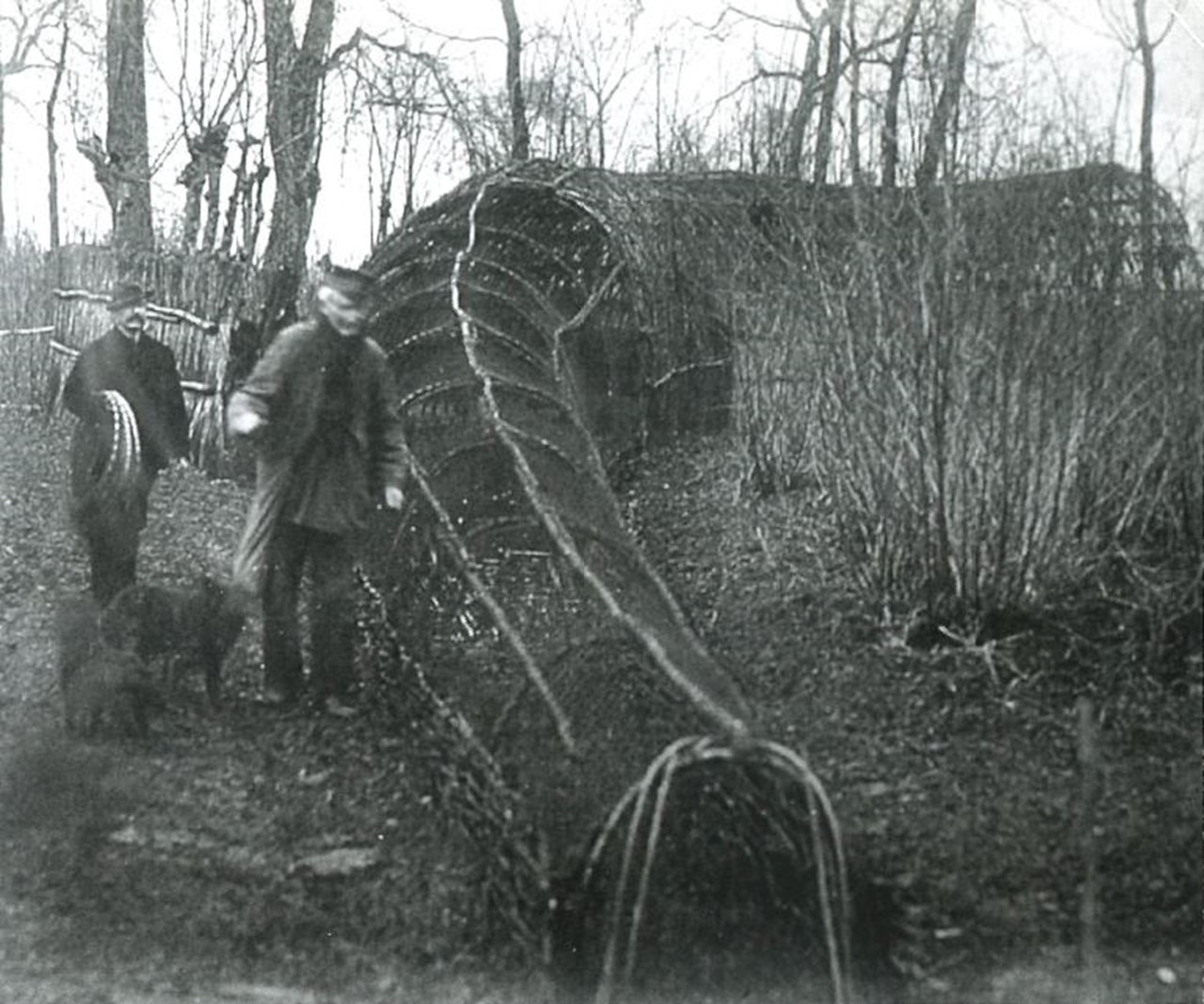Organization
Kempens Landschap FoundationCultural Project
BelgiumStarted
01/2023Status
Completed
Along the Old Scheldt in Bornem in the province of Antwerp lies Marnix de Sainte Aldegonde Castle. An idyllic spot where the spirit of the former landed gentry still haunts and where forestry, hunting and agriculture were important pillars of the castle's operations. Alongside the banks of the Old Scheldt, the castle hides a special piece of landscape heritage, a historical duck decoy, whose origins date back to the 14th century and which is therefore considered the oldest in Europe.

Figurative map (c. 1780) -Bibliothèque Nationale de France, département Arsenal MS-646-1 (641A) (Paris) depicting 6 trapping pipes in Bornem's duck decoy.
What is a duck decoy?
A duck decoy is a pond from with several ditches that are bordered with reed/willow screens, roofed with brackets and wire netting, that are ending in a trap. The funnel-shaped canals are called traps. This system was used to catch ducks without having to shoot them.
The duck decoy did not stand alone. The decoy man led the catch and was helped in this by the decoy dog. Which trapping pipe was chosen for the catch depended on the wind direction that day. The decoy man maintained the duck decoy meticulously and there was always something to do: pollarding trees, removing coppice, repairing fences, keeping the paths free of branches, feeding the tame ducks,...
In 1972, catching ducks for consumption was banned. From then on, the duck decoy was used only for scientific purposes. The Agency for Nature and Forests and the ornithological society De Wielewaal used the cage to catch and ring ducks. In 1998, this activity also stopped. Since then, the cage has not been used as a catching facility, with the result that no management and maintenance were carried out there either.

Cage man and cage dog at a trapping pipe of the duck decoy in Bornem ca. 1898
Given the historical importance of the duck decoy, Heritage (Onroerend Erfgoed) decided in 2018 to protect the Bornem duck decoy as a monument. In the same year, Tourism Flanders (Toerisme Vlaanderen) decided to support the tourist project 'From stone to stone' of the Regional Landscape Schelde-Durme. This project aimed to create a tourist-recreational network of heritage sites in the Scheldt Valley.
Soon Foundation Kempens Landschap came into the picture thanks to its experience in the field of heritage conservation, public access and nature management. An agreement was drawn up between the Domein van Bornem (owner of the castle, the castle grounds and also the duck decoy), Tourism Flanders, Kempens Landschap, the municipality of Bornem and the Regional Landscape Schelde-Durme. In the long lease agreement, it was agreed that Kempens Landschap would be responsible for the restoration, opening and maintenance of the duck decoy.
"With the restoration, we want to make the duck decoy accessible to the general public for the first time in its history. An honour that the oldest duck decoy certainly deserves and which Kempens Landschap, with the support of VGP, is keen to put its shoulder to the wheel and make it happen on site."
Kempens Landschap